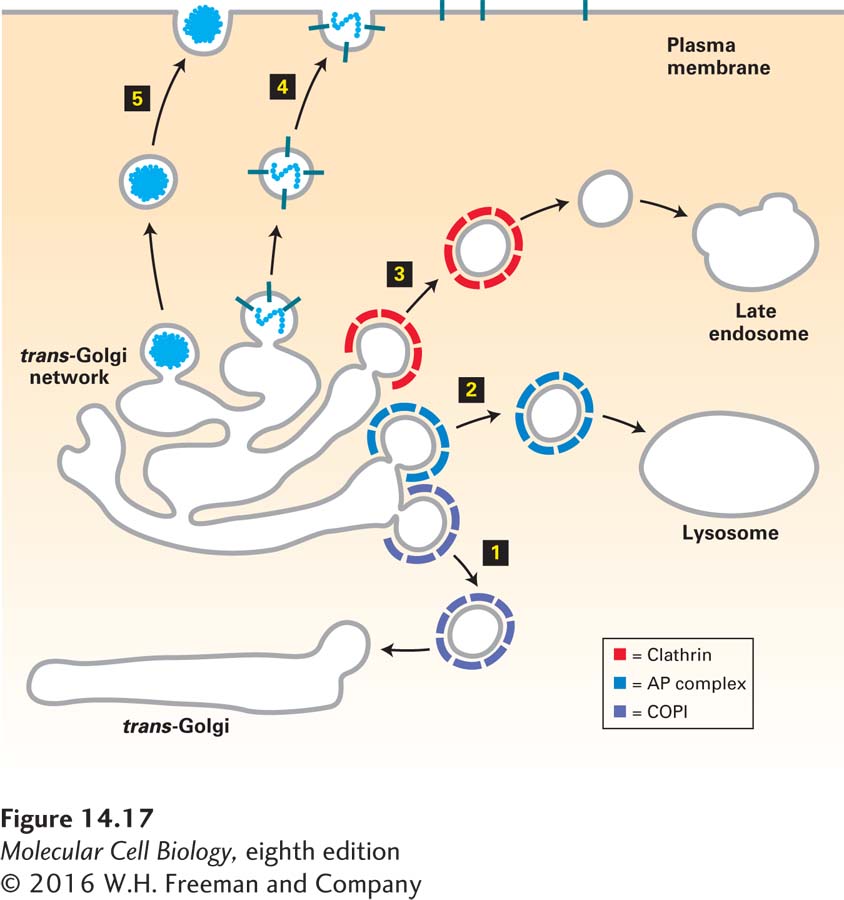As cargo proteins move from the cis- to the trans-Golgi by cisternal maturation, modifications to their oligosaccharide chains are carried out by Golgi-resident enzymes. The retrograde trafficking of COPI vesicles from later to earlier Golgi compartments maintains sufficient levels of these carbohydrate-modifying enzymes in the appropriate compartments. Eventually, properly processed cargo proteins reach the trans-Golgi network, the most distal Golgi compartment. Here they are sorted into a number of different kinds of vesicles for delivery to their final destination. Each of the target destinations, such as the plasma membrane, endosomes, and lysosomes, has a unique composition of lipids and membrane proteins, and it is primarily the sorting in the trans-Golgi network that gives each of these organelles its unique identity. In this section, we discuss the different kinds of vesicles that bud from the trans-Golgi network, the mechanisms that segregate cargo proteins among them, and key processing events that occur late in the secretory pathway. The various types of vesicles that bud from the trans-Golgi are summarized in Figure 14-17.

FIGURE 14-17 Vesicle-mediated protein trafficking from the trans-Golgi network. COPI (purple) vesicles mediate retrograde transport within the Golgi (1). Proteins that function in the lumen or in the membrane of the lysosome are first transported from the trans-Golgi network via clathrin-coated (red) vesicles (3); after uncoating, these vesicles fuse with late endosomes, which deliver their contents to the lysosome. The coats on most clathrin-coated vesicles contains additional proteins (AP complexes) not shown here. Some vesicles from the trans-Golgi carrying cargo destined for the lysosome fuse with the lysosome directly (2), bypassing the late endosome. These vesicles are coated with a type of AP complex (blue); it is unknown whether these vesicles also contain clathrin. The coat proteins surrounding constitutive (4) and regulated (5) secretory vesicles have not yet been characterized; these vesicles carry secreted proteins and plasma-membrane proteins from the trans-Golgi network to the cell surface.

